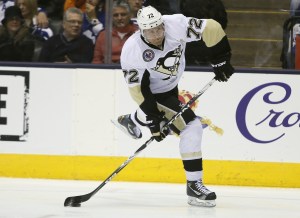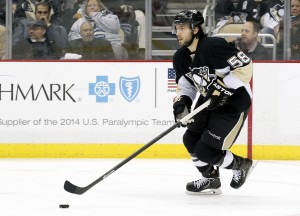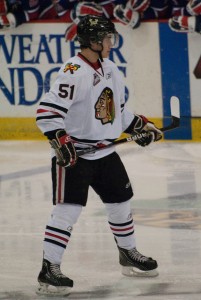The Pittsburgh Penguins made headlines last season when their power play started 18-of-43. They were converting at a rate of around 42% during the beginning of the season, but it would not last forever.
As injuries set in, the Penguins power play went dark and was remarkably ineffective. Many different combinations were tried to revive their once vaunted unit, but nothing seemed to work.

Their most frequent combination ended up being Patric Hornqvist, Evgeni Malkin, Sidney Crosby, Chris Kunitz and Kris Letang. They were on the ice together for 36.2% of Pittsburgh’s total powerplay opportunities.
By the end of the season they were deploying Crosby, Hornqvist, Malkin, Paul Martin and David Perron due to injuries.
But what will be their top power play unit to start the 2015-2016 season?
Paul Martin looks to be leaving the Penguins, there are doubts that Kunitz can keep playing at a high level and Perron was very streaky.
The Ideal Unit With Current Penguins
There’s a combination that the Penguins rarely used last season that could be quite effective. You can blame injuries for them not trying this combination out more, but they should definitely experiment with this group next season.

Malkin down low on the left side, Crosby on the right and Hornqvist in front of the net.
Crosby’s always looked like a better player when he’s on the right side of the ice, especially when on the power play. Malkin has been played on the point and really isn’t effective from that position, he needs to be down low as well.
With Crosby on the right side, put Malkin down low on the left and then there’s Patric Hornqvist in the center.
There are few players that are better at crashing the net and scoring the “dirty” goals than Hornqvist, so let him do just that.
This forward combination is nothing revolutionary, but it takes the best attributes of each player and let’s them use them.
What About On Defense?
Now what do the Penguins do on the point if they move Malkin to the left side?
Place Letang on the left point.
Letang is a phenomenal athlete with a less than ideal hockey IQ for a player of his ability. He’s a great player at even strength, but a mediocre power play quarterback and the league knows it.

He’s a liability when trying to hold the blue line on his own and likes to shoot the puck rather than pass. Give him more freedom on the power play to operate as a forward and not as the only defender.
Who would you play as the other defender then? Derrick Pouliot.
The Penguins rookie of the year (although he did win the award by default) had a rough time playing at even strength. He seemed to be overwhelmed by playing against very skilled forwards and his plus/minus rating showed it (-11 on the season). But there’s one place that Pouliot looked at home for the Penguins, and that was on the power play.

If Pouliot can work on his game this offseason, he could be an excellent power play quarterback. Despite being a rookie, he had excellent vision and knew when to distribute the puck and when to fire during his limited time on the man-advantage.
He played just 82:34 on the power play this season, but his points-per-sixty-minutes played was 2.91 and second of all Penguin defenders. The top producer (as you’d expect) was Letang with 5.01 points per sixty.
However, his Fenwick/Corsi statistics were actually superior to Letang. Additionally, while on the power play Letang was involved in 80% of the points scored, while Pouliot was only involved in 66.7%. This shows that he wasn’t trying to be involved in every play and distributing the puck much more effectively.
Both Pouliot and Letang are extremely productive on the powerplay, so why not deploy them together on the point?
Letang, a right shot, and Pouliot, who shoots left, should channel the puck inwards and give Hornqvist the maximum number of opportunities to cash in on rebounds.
Without another defender on the point, Letang’s a huge liability on the powerplay and we’ve seen it time and time again.
The combination of Malkin – Hornqvist – Crosby and Letang – Pouliot should improve the Penguins power play’s effectiveness, while actually reducing the number of shorthanded chances against.